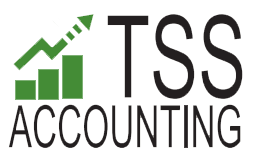Minimize Your Taxes
Retirement planning involves making strategic decisions that can significantly impact your
financial future.
Understanding Tax-Deferred Growth vs. Tax Free Growth
Retirement planning involves making strategic decisions that can significantly impact your financial future. One crucial aspect is understanding the difference between tax-deferred growth and Roth (tax free) designations.
1. 401(k)/Traditional IRA Balances and Growth
Tax-deferred accounts like 401(k)s and traditional IRAs allow your investments to grow without being taxed until withdrawal. However, this also means that larger balances can result in higher RMDs and, consequently, higher taxes in retirement. By gradually converting some of these balances to Roth accounts, you can benefit from tax-free growth and withdrawals, potentially reducing your overall tax burden.
2. Timing and Tax Brackets
Timing your contributions and withdrawals is crucial.
During your working years, contributing to a traditional
401(k) or IRA can lower your taxable income. In retirement, Roth withdrawals can help keep you in a lower tax bracket, especially if tax rates rise in the future. Balancing contributions between traditional and Roth accounts can provide flexibility to manage your tax brackets effectively.
3. Standard Deduction: Now vs. Future
The standard deduction may change over time due to inflation adjustments and legislative changes. Planning for this can influence your strategy. Currently, the standard deduction is substantial, but it's essential to consider how future changes might impact your taxable income and tax planning strategies.
4. Social Security and Its Taxable Portion
Anywhere from 0% and up to 85% of your Social Security benefits can be taxable, depending on your combined income. Strategic Roth conversions can help reduce your taxable income, thereby lowering the percentage of your Social Security benefits that are subject to taxes. Understanding the interplay between your Social Security benefits and your retirement account withdrawals is key to effective tax planning.
5. Lowering Medicare Premiums
Your Medicare premiums are based on your modified adjusted gross income (MAGI). Higher MAGI can lead to increased premiums. By managing your income through Roth conversions and strategic withdrawals from your retirement accounts, you can potentially lower your MAGI and reduce your Medicare premiums. This is another reason why balancing your tax-deferred and Roth accounts is crucial for comprehensive retirement planning.
6. Qualified Charitable Distributions (QCDs)
If you’re charitably inclined, QCDs can be a tax-efficient way to meet your RMD requirements. When you are at least 70 1⁄2 years of age or older, You can donate up to
$105,000 directly from your IRA to a qualified charity, excluding the donation from your taxable income. This strategy can help reduce your taxable income and
potentially lower the tax impact on your Social Security benefits.
7. Required Minimum Distributions (RMDs)
When you turn 73, you must start taking RMDs from your traditional 401(k) and IRA accounts. These distributions are taxed as ordinary income, potentially pushing you into a higher tax bracket. Planning ahead by strategically
converting some of your savings to a Roth account can help manage these future tax obligations. Roth accounts do not have RMDs, allowing your investments to grow tax-free for a longer period.
Conclusion
The decision between tax-deferred growth and Roth designation is not one-size-fits-all. It requires careful consideration of your current and future tax brackets, the timing of withdrawals, the impact of RMDs, the taxation of Social Security benefits, and the effect on Medicare premiums. By understanding and strategically planning
these variables, you can maximize your retirement savings and minimize your tax liabilities.
